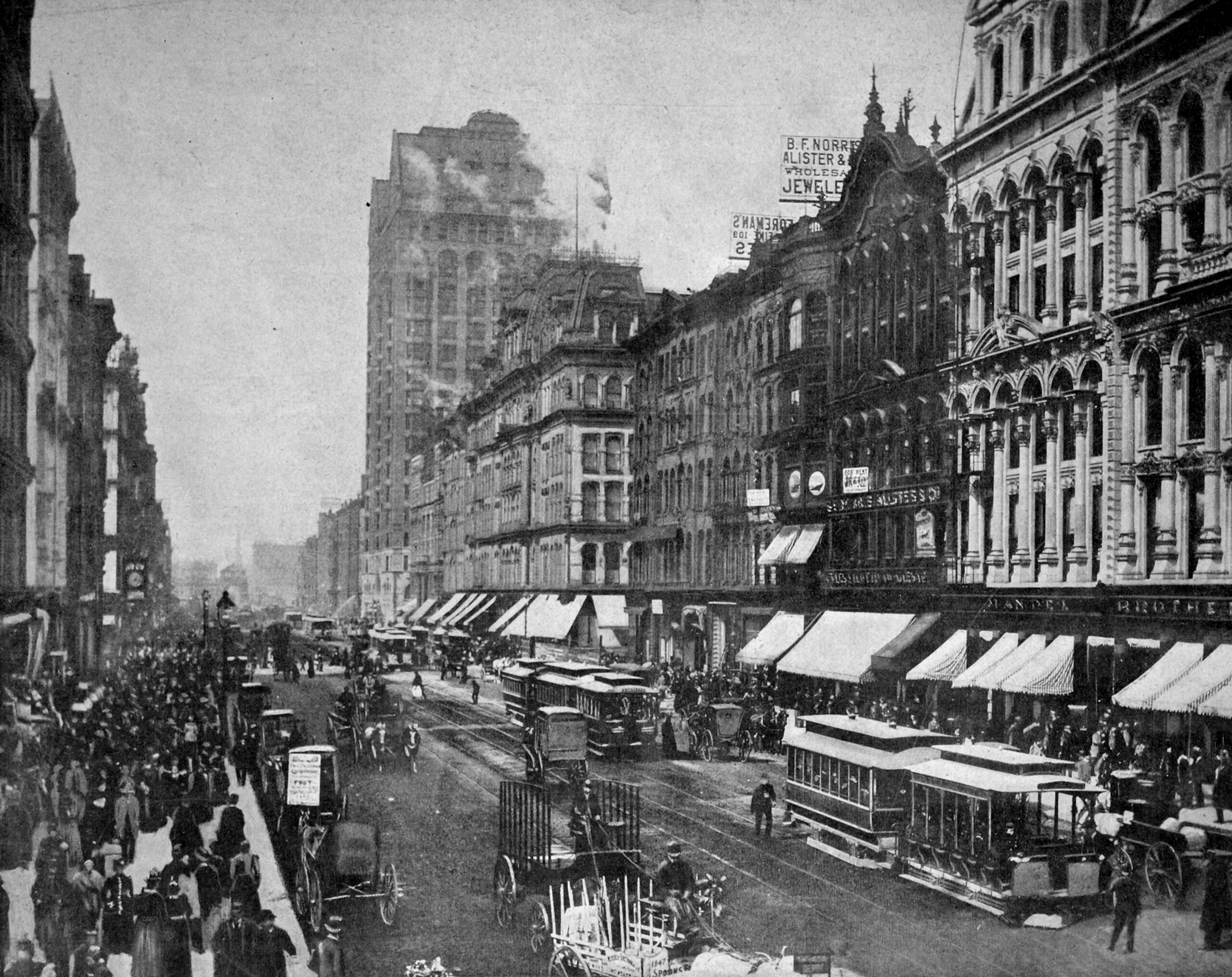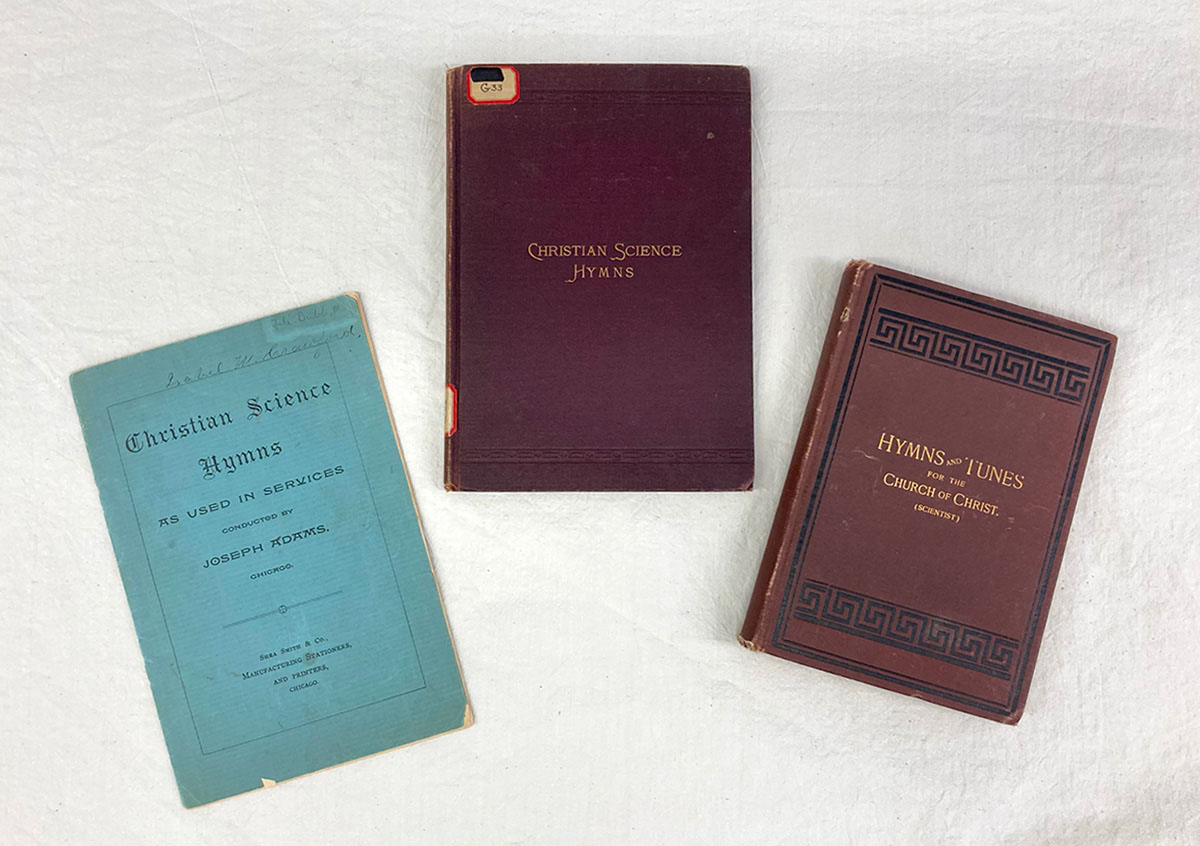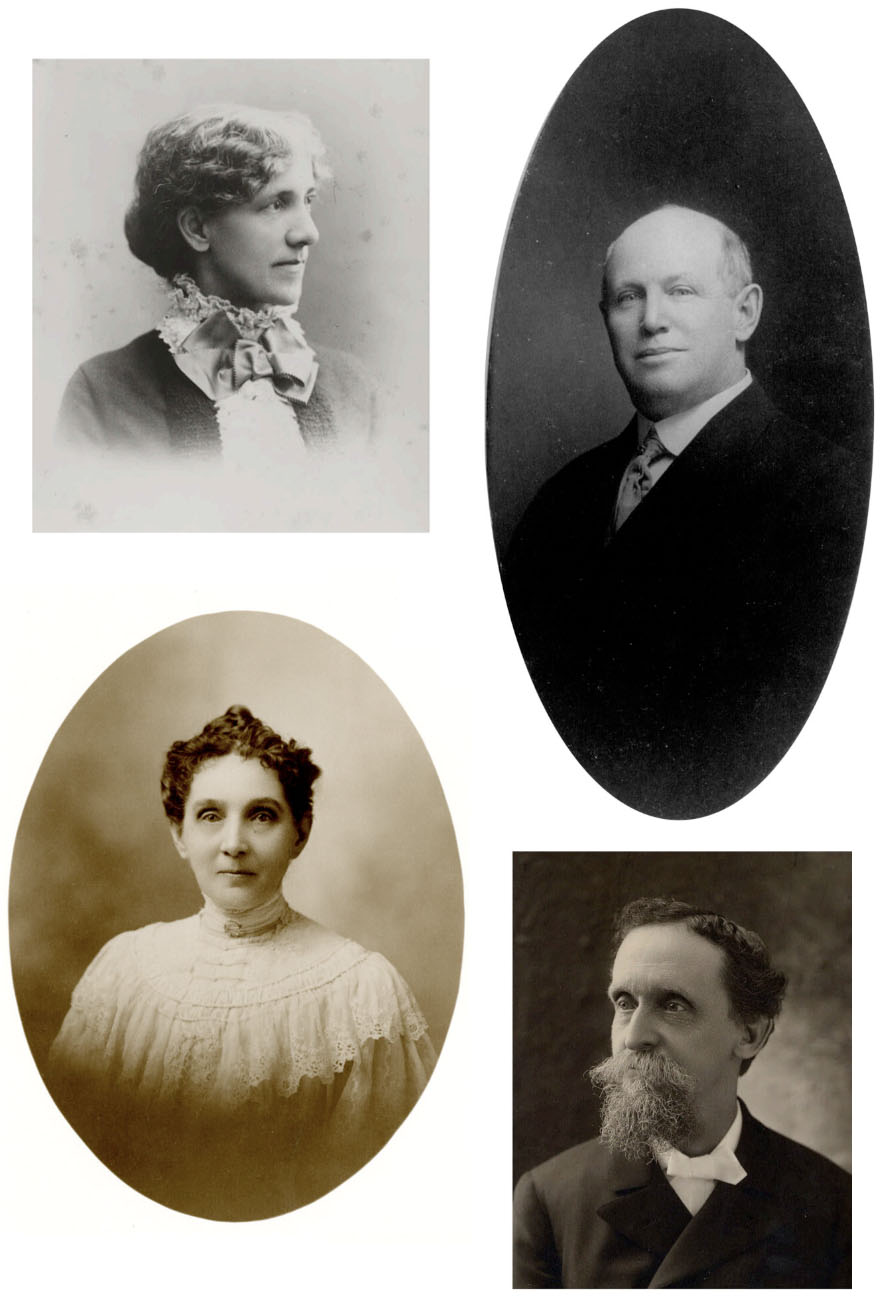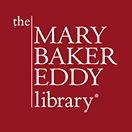The Christian Science Hymnal: History, Heritage, Healing
The Christian Science Hymnal: History, Heritage, Healing
The Christian Science Hymnal: History, Heritage, Healing
Chapter 2
The Chicago hymnals and the 1892 Hymnal
The gathering momentum of Christian Science in Boston in the late 1880s was paralleled by the strengthening movement in Chicago. Mary Baker Eddy’s visit to teach a class there in 1884 certainly contributed to this. By 1889 Chicago’s Christian Scientists were working steadily to publish hymnals locally—three years prior to the first official hymnal issued by The Christian Science Publishing Society in Boston. That same year Eddy resigned her pastorate and disorganized the Church of Christ (Scientist). But it continued to meet as a voluntary association, as did other Christian Science churches, including in Chicago. In 1892 she reorganized her denomination as The First Church of Christ, Scientist, with significant changes in polity.
The first Chicago-produced hymnal was the 1889 Christian Science Hymns as Used in Services Conducted by Joseph Adams.1 The author, Joseph Adams, was an English-born clergyman who had emigrated to California. Sometime in the mid-1880s he became interested in Christian Science and moved to Boston, studying in Eddy’s April 1886 class, along with two other clergymen, Rev. William I. Gill and Rev. George B. Day. Eddy invited him to preach in her Chickering Hall services. He eventually established himself in Chicago.

State Street, Chicago. ilbusca / DigitalVision Vectors / Getty Images
Keenly interested in hymnody, Adams founded a journal in 1887, The Chicago Christian Scientist, in which he published renditions of hymns from a volume widely used in American churches during that period called The Gospel Hymnal. Sometimes he altered the original text to align it with the teachings of his newfound religion. In time he produced a words-only pamphlet titled Christian Science Hymns, so worshippers would be able to “sing the truth as well as talk it.”2 Seven of the selections were included in the 1892 Christian Science Hymnal, and later in the 1932 edition.
Eventually Adams came under the influence of Mary M. Plunkett and Emma Curtis Hopkins, two Chicago women with an alternative theology that he found attractive.3 Although Eddy loved and supported him for several years, Adams gradually distanced himself from Christian Science and severed his connection in 1891.
The second Chicago hymnal was A Collection of Familiar and Original Hymns and Tunes Rendered Scientifically, for Christian Science Service.4 In May 1884, when Eddy offered Christian Science class instruction in Chicago, author Ursula Gestefeld was among her students. An effective teacher, this new adherent gave herself unreservedly to the practice of Christian Science and soon won a substantial following.
Gestefeld was a close associate of Hannah More Kohaus. A poet interested in hymnody, she wrote a number of hymn texts.5 The first of her many poems was published in March 1888, in the Chicago Christian Scientist.6 The following year Kohaus became the driving force behind Gestefeld’s 1889 hymnal. It featured 30 of her own poems, alongside many other notable writers such as John and Charles Wesley, founders of Methodism, as well as compositions by famous musicians such as Handel, Mendelssohn, Haydn, and Arthur Sullivan. In the preface Gestefeld stated that “this hymn book has been prepared for Christian Science service, in the hope that it may meet a necessity.” While many of the 72 tunes and 121 texts were later included in the 1892 Hymnal, none was by Kohaus. Gestefeld left Christian Science in 1889.

Locally published Chicago hymnals, edited by Adams, Gestefeld, and Day.
The third and largest of the Chicago hymnals was Hymns and Tunes for the Church of Christ (Scientist). Compiled and arranged by Jessie Day, it was published in 1889 by her mother, Orrilla W. Day.7 Jessie Day’s father, the aforementioned Rev. George B. Day, became first pastor of the Chicago church. However, despite his original strong embrace of Christian Science, he eventually wavered in his theological position and dissolved his connection with the church in 1890.8
This hymnal included the first musical setting of Eddy’s poem “‘Feed My Sheep,’” which had been published in the March 1887 Christian Science Journal, set to the tune ST. NICHOLA.9 Forty-three of the 206 hymns in Jessie Day’s compilation appeared in the 1892 Hymnal. It also included “Thy Way” by Myra J. H. Zink, from the August 1888 Journal, one of the earliest poems published in the church’s magazines to be set to music.10
“Feed My Sheep”
“Thy Way”
In addition to the Chicago hymnals, two other early publications should be noted. A slim volume with words only, titled Christian Science Hymns, was published by the Rev. Frank E. Mason in Brooklyn, New York, in 1890. He came into the Christian Science movement about 1888, studied with Eddy, and wrote prolifically for the Journal. For four years he was assistant pastor of the church in Boston. His modest cardboard publication contained 14 hymns that were probably used in the services Mason conducted. Another publication, The Church of Christ (Scientist), New York City, was a small booklet of 39 hymns about which little is known. Penciled on the cover of an extant copy are the words “2nd Church, N.Y.”11
1892: The want of ‘a suitable hymn book’
As momentum toward the publication of the first official Christian Science hymn book gained strength, poems published in the Journal from 1886 to 1891 became valuable spiritual seeds. This included those by students of Christian Science (such as Frances Fox’s “In Thee, O Spirit, true and tender”) and others (for example, Thomas Toke Lynch’s “Gracious Spirit, dwell with me”). Seventeen of the texts eventually found placement in the 1892 Hymnal.
Christian Scientists would certainly have been greatly interested in the July 1889 Journal notice called “A Christian Science Hymn Book.” It began:
There is no want in the conduct of Christian Science public and social services more keenly felt than that of a suitable hymn book. At the late meeting of the National Association, the preparation of a hymnal was mentioned as one of the first duties of the Committee on Publication, and of the C. S. Publishing Society, for whose creation provision was made…. Perhaps a small collection for Sunday school and social use might be published in the early Fall that would serve for church worship, pending the preparation of the larger work, that could be ready for publication at the time of the next meeting of the Association. Every Scientist who has musical education can help in this most useful work; and any who have not, can render valuable aid by sending in pieces that have struck them as adapted to a collection for Christian Science worship.12
Three months later another notice invited Christian Scientists to submit texts and tunes to Lyman F. Brackett, who eventually became the editor of the 1892 Hymnal:
Mr. Lyman Brackett…is actively engaged in the compilation of the promised Christian Science hymnbook. Every reader of the JOURNAL has some favorite hymns. Let everyone send to Mr Brackett…his or her list of hymns suited for a Scientist hymn-book, with a reference to the collection, in which each is found, the number of the page and the name of publisher. Many valuable contributions have already been sent to the editor of the JOURNAL.13
In August 1890 a hymnal committee was established and announced:
CHRISTIAN SCIENCE PUBLISHING SOCIETY,
24 Boylston Street.
BOSTON, Mass., Aug.
5th, 1890.
Wm. B. Johnson,
41 G. St. So. Boston.
Dear Sir:
At a recent meeting of the Publication Committee of this Society you were selected as a member of a committee appointed to compile a church hymnal for the use of Christian Scientists. The names and addresses of the committee are herein enclosed.
Prof. Lyman Brackett, 152 Tremont St., Boston, Chairman.
Miss Julia Bartlett, W. Rutland Sq., Boston.
William B. Johnson, 41 G. St., So. Boston.
Miss Susie M. Lang, 279 Broadway, Lawrence, Mass.
Mrs. Chas. Thomas, 201 W. 55th St., N. Y. City.
E. H. Hall, 44 Boylston St., Boston.
W. G. Nixon, 24 Boylston St., Boston.
Said Committee will meet at the call of the Chairman.
If for any reason you cannot serve on this committee, please notify the Chairman,
Respectfully,
W. G. NIXON, Sec’ of Committee.
(Board member/editor/publisher)14
The December 1890 Journal announced that a words-only collection of hymn texts would be provided as a transitioned step, until the Hymnal was published. It was printed on white cardboard with a tune recommended for each text.
High standards and frequent meetings
Eddy was alert and watchful concerning all church activities. Her experience in writing poetry and her appreciation of music were enough that she could be of help to those constructing the hymnal. Brackett’s reminiscences from many years after her passing reveal a friendship that enabled them to work together closely. This gave Eddy the confidence that her ideas would be conveyed clearly and precisely. A hymnal published under the name of her church must set a high standard of metaphysical accuracy and musical excellence. It was also important that every Christian Science church use the same volume.

Studio portraits: Members of the 1892 hymnal committee. Row 1: Julia Bartlett, n.d. P00353; William G. Nixon, n.d. P01395; Row 2: Susie M. Lang, n.d. P01093; William B. Johnson, n.d. P00991. Not pictured: Lyman Brackett; E. H. Hall; Mrs. Charles Thomas.
Creating and assembling a hymnal is a monumental task.15 William Lyman Johnson provides interesting insights into the committee’s work: “To Miss Bartlett, Miss Lang, Mr. Nixon, and my father was entrusted the labor of the selection of the words, and to the others, the selection of the music.” Johnson’s father, William B., cited almost 30 meetings that year, many of which included Lyman Brackett. According to Paul Williams, Brackett “indicated…that he had done the musical work and the compilation of the hymnal himself, using every spare moment in the past year, often working beyond midnight and rising as early as 4 a.m.16
Work proceeded steadily over many months, with meticulous attention to detail. Eddy was kept informed of the progress and gave the committee permission to include three of her poems: “Christ My Refuge” (1868), “Communion Hymn” (1876), and “‘Feed My Sheep’” (1887).17
The first official hymnal of Christian Science
The committee completed its work after two years of earnest prayer, frequent meetings, and editorial vigilance, and the Hymnal was prepared for publication. The Christian Science field had been kept apprised of the committee’s progress through Journal announcements such as this:
We regret to state that the very best arrangement that can be made with our printer will not permit our CHRISTIAN SCIENCE HYMNAL to be issued earlier than JULY, 1892. We confidently hoped it might be earlier, but cannot now hold out a hope it may be.18
Finally, two months later, readers found the anticipated announcement that people could at last order copies of the new book:
ORDERS for the CHRISTIAN SCIENCE HYMNAL will now be received, though it may be August 1st before deliveries can be made. None of those charged with the responsibility of compiling this work comprehended what an arduous and long drawn-out task they had undertaken. THE HYMNAL will be bound in two styles—cloth, and leather finish. Prices will be, Cloth, per copy, prepaid ….. $1.15. each. Leather finish, ” ” ….. 1.40 ” When ordered in quantities of twelve or more copies at one time, and to one address, the discount will be twenty five cents a copy from retail price of $1. and $1.25, respectively, and we prepay expressage.19
The long-awaited volume, Christian Science Hymnal: Selection of Spiritual Songs, bears the publication date of December 1892.20 At last the Christian Science church possessed its very own hymnal. Now it could—and would—confidently move forward into a new and more spiritual era of hymn singing.
Recorded hymns in this chapter performed by Christa Seid-Graham (voice) and Bryan Ashley (keyboard).
© ℗ 2024 The Mary Baker Eddy Library. All rights reserved.
Chapter notes:
- Joseph Adams, Christian Science Hymns As Used In Services Conducted by Joseph Adams (Chicago: Shea Smith & Co., c. 1889).
- “Hymns,” Chicago Christian Scientist, February 1889, 216.
- Hopkins became a leading figure in New Thought. Plunkett had a briefer, more controversial career in that movement.
- Ursula Gestefeld, A Collection of Familiar and Original Hymns and Tunes Rendered Scientifically, for Christian Science Service (Chicago: Ursula N. Gestefeld, 1889).
- Kohaus went on to contribute tracts and poetry to New Thought. Unity Library and Archives: https://www.truthunity.net/sites/all/content/assets/people/kohaus-hannah-more/kohaus-hannah-more-informaton-from-unity-archives.pdf, accessed 12 January 2023.
- Kohaus, Hannah More, “One of God’s Angels,” Chicago Christian Scientist, March 1888, vol. 1, no. 10 (Chicago: Joseph Adams), 227.
- Jessie Day, Hymns and Tunes for the Church of Christ (Scientist) (Chicago: Mrs. O. W. Day, 1889). Rare Book Collection, M2131 .C5 H9 1889.
- Caroline Dorr Noyes helped to organize the original Church of Christ, Scientist, in Chicago in 1884. While this may have been a milestone, by 1890 the church lost George Day as its pastor and dissolved. In her reminiscence Noyes recalled, “…it seemingly devolved upon me to take a stand for Christian Science and Our Leader.” A new church was soon organized. Caroline D. Noyes, ”Christian Science Notes by Caroline D. Noyes… from her personal experience,” n.d., Reminiscence, LSC009, 5.
- Mary B. G. Eddy, “Feed My Sheep,” The Christian Science Journal, March 1887, 303.
- M.J.H. Zink, “Thy Way,” Journal, August 1888, 233. “Thy Way” was included in the 1892 Hymnal but not in later editions.
- Church of Christ, Scientist, New York (Second), Christian Science Hymns, (New York, 189_?). The New York Public Library holds a copy of this booklet.
- ”A Christian Science Hymn Book,” Journal, July 1889, 187–188.
- ”Notice,” Journal, October 1889, 367.
- William G. Nixon, “Letter to [Ethel] H. Hall,” 5 August 1890, Subject File, Christian Science Publishing Society – Publications – Hymnal.
- Robert Rockabrand served on The Mother Church’s Hymnal Revision Committee, which met for several years in the 1980s. He was also a member of the 2008 Supplement Committee, which met over several months to construct a slim volume containing 33 new hymns.
- Paul O. Williams, “The Evolution of the Christian Science Hymnal” (unpublished manuscript), 1979, Principia College Marshall Brooks Library, Rare Book Collection, BV372. W72 1979, 17.
- Mary Baker Eddy to William Lyman Johnson.
- “Publisher’s Department,” Journal, May 1892, 88.
- “Publisher’s Department,” Journal, July 1892, 176.
- The Christian Science Hymnal: A Selection of Spiritual Songs (Boston: The Christian Science Publishing Society, 1892).
